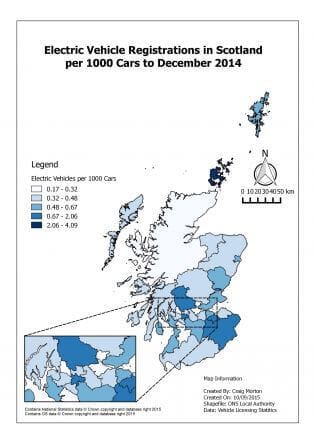To help reduce emissions in the transport sector, and meet the net-zero target, in 2020 the Scottish Government committed to a 20% reduction in car kilometres (km) by 2030.
This project set out to increase understanding of public perceptions, user needs, and approaches to support uptake of future low-carbon mobility systems in Scotland. The report examines public perceptions towards the 20% reduction commitment. It details findings from six two-hour focus groups conducted virtually in July and August 2021.
The original was refocused to include lessons from the Covid-19 pandemic, and links to the UK-wide research project, Covid-19 Transport, Travel and Social Adaption Study (TTAS), which is examining longitudinal and regional impacts of the pandemic on transport and travel in Scotland and England, and how people have adapted.
Key findings
Car clubs & car sharing
- Most focus group participants not aware of car clubs or car sharing schemes; felt they needed more information.
- Participants viewed lift and ride sharing more negatively than car clubs; the two different schemes can be easily confused.
- Desire for club cars to be in easy-to-access and safe-to-access locations.
- Those participants who were young people and inexperienced drivers raised questions about car club pricing structures.
- Some participants interested in using car clubs as alternative to longer car journeys when linked with other transport modes, for example, trains and accessing car clubs at stations.
- Some households with 1+ cars see car clubs as a viable alternative to the 1+ car, but car clubs do not currently appeal as an alternative to household car ownership.
Reducing car kilometres – public perceptions as to what needs to be in place
Focus group participants would like to see:
- improvements to public transport, making it ‘more accessible, more affordable with a reliable and frequent service’ (quote from focus group)
- a central place for information on travel options and alternatives to car travel
- more services come to the home g. grocery, takeaways, non-food deliveries
- a continuation of working from home and flexible working options
- car pooling and car sharing for work
- improvements in cycle infrastructure especially in rural areas
- electric vehicle (EV) options for mobility vehicles and accessible EV charging infrastructure
There are some journeys which participants are less willing to adapt, such as grocery shopping, leisure journeys which involves transporting equipment, and journeys with 1+ children. There is also some hesitation about changing journeys over winter.

Using Edinburgh as an example this report assesses the level of vulnerability across the South-East of Scotland Region. The spatial vulnerability assessment considers exposure, sensitivity, and adaptive capacity to the introduction of a Low Emission Zone. This assessment is built into a Geographical Information System as a site selection tool.
The findings from a spatial vulnerability assessment could be used to plan specific interventions or investments.
ClimateXChange convened a meeting with Transport Scotland to discuss the Scottish Transport Energy and Air Pollution Model (STEAM). This facilitated dialogue between academics from CXC and UKERC, and policy and analytical staff from Transport Scotland, aimed to agree the potential capabilities and data requirements of such a model for Scotland. The event also looked at the scope for application of the STEAM model in support of transport emissions reduction policy development in line with the draft Climate Change Plan.

This policy note explores how users perceive quality of bus services in Scotland. It provides insights into how the experience of taking a bus in Scotland may be improved for users in in order to encourage further bus patronage. The key findings include:
- Service convenience – frequency and regularity – is the most important issue when existing bus users consider how satisfied they are.
- Targeting service improvements in relation to frequency, availability, reliability and stability will likely generate the highest returns to investment relating to the perceived satisfaction of existing bus users.
- The comfort and cleanliness of the bus and the ease of use of the service are still significant in user evaluations of the service, they tend to be of secondary importance

To date, the expansion of the UK’s EV market has been evaluated by monitoring EV registrations across the UK as a whole. This policy brief provides a spatial analysis of EV sales in the UK, with a particular focus on Scotland, to evaluate how EV registrations are occurring across different geographical areas.
The analysis reveals that Scotland ranks ahead of Wales and Northern Ireland in EV adoption, with EVs representing 0.05 of Scotland’s total car fleet. Adoption rates vary signficantly between local authority areas in Scotland and correspond with levels of installed EV infrastructure, as well as socio-economic characteristics.
These findings improve understanding of Scotland’s developing EV market, enabling the consideration of local circumstances in policy development.